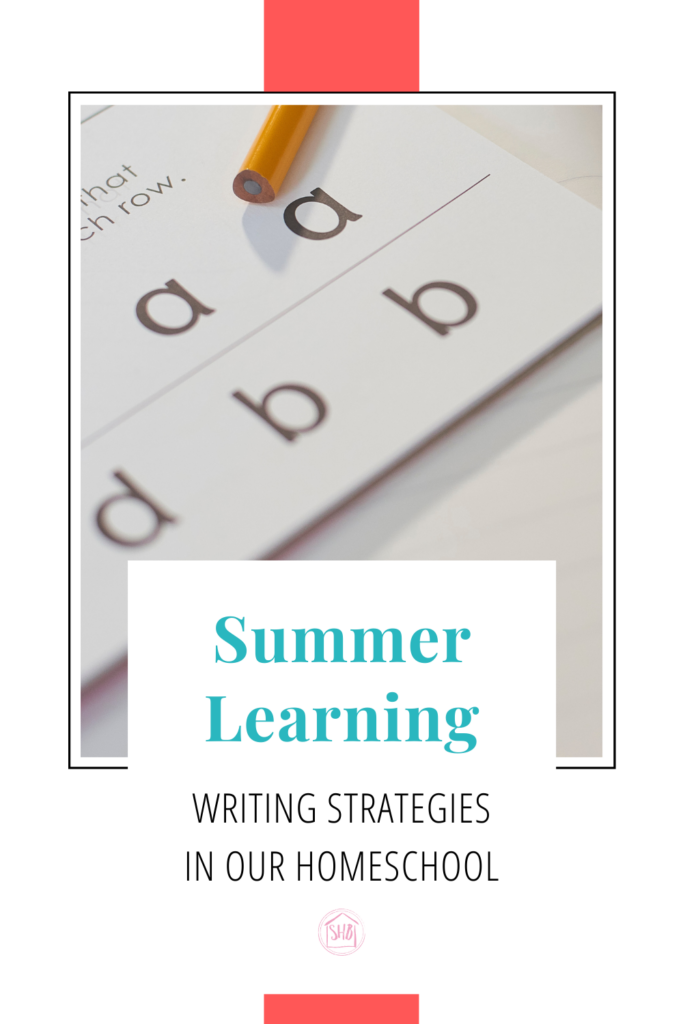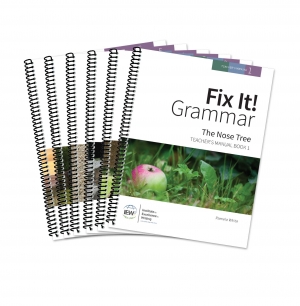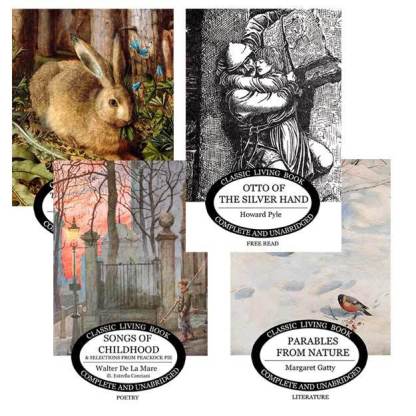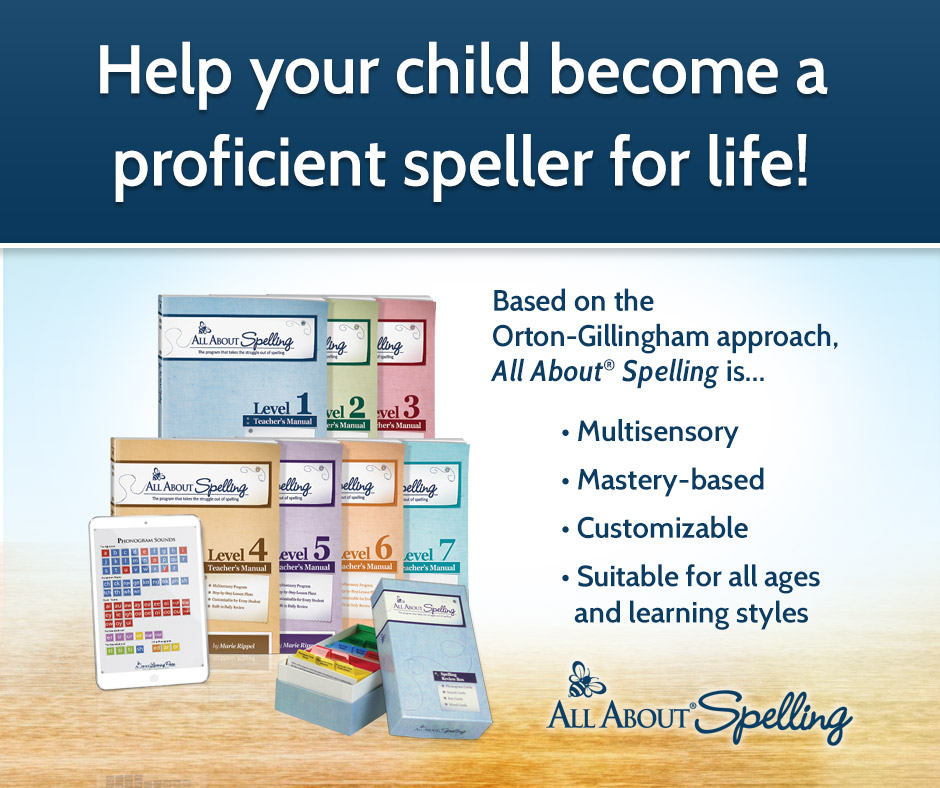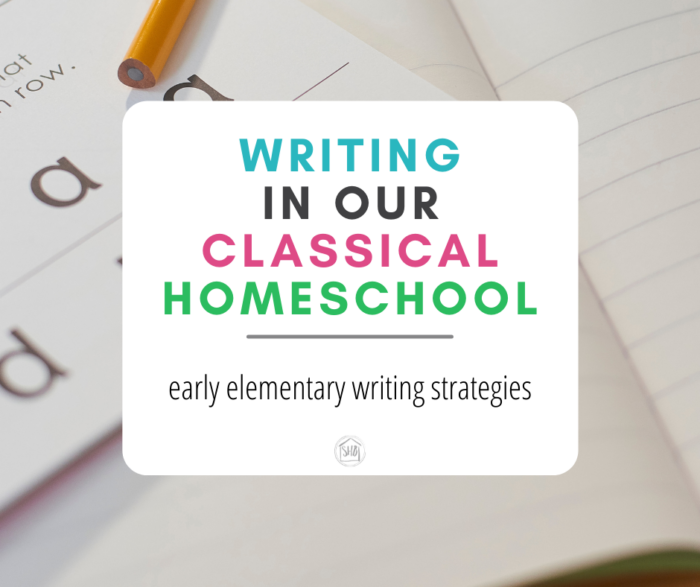
Since we are part of a local Classical Conversations community and we are also influenced by Charlotte Mason’s educational philosophies, we are do not do a “formal” writing program until upper elementary. Our oldest student just completed her first grade of upper elementary, so we don’t have a lot of experience with writing or writing curricula in our homeschool – just yet.
However, I do have some writing related tasks for my students to complete in the Summer Term. Today I thought I would share with you what our Summer Term looks like for this year. It may look different in future years. But this is what is working for us at this stage of our homeschooling.
This post may include affiliate links. If you click and make a purchase based on my recommendation, I get a small remuneration at no extra expense to you. I only recommend things I use and believe to be a blessing.
On Classical & Charlotte Mason Homeschooling
In the early years of elementary our focus is not on writing as much as on penmanship. Our homeschool approach, a decidedly Classical approach, with Charlotte Mason for richness and texture allows for a more relaxed build up to student writing.
While I do appreciate Charlotte Mason’s ideas about narration, I simply do not believe in her techniques for spelling, dictation, and recitation. I say this having never read Miss Mason’s actual writings; having only read what others have interpreted. From what I can tell Miss Mason is from the school of “more learning is caught than taught” – specifically when it comes to these areas. And honestly, Miss Mason and Leigh Bortins (founder of Classical Conversations) would likely have a lively discussion about spelling in which they would find themselves much in agreement.
For spelling, they believe observation to be the best teacher. The idea of spelling being either natural or unnatural – either you were blessed with a brain which spells or you were not. Here Miss Mason and Mrs. Bortins would separate in the conversation about spelling. Miss Mason gliding gracefully to the side of observation only – reading great works of literature and discovering other languages will train the brain to spell. Mrs. Bortins hews to the philosophy of teaching the “most common words” spelling. Thus Classical Conversations sells the spelling program Spelling Plus – which teaches the most common words.
In my homeschool experience, observing one’s way to spelling is not a successful way to teach spelling. Firstly, I am not a “natural speller.” But, as I have shared here on this blog, I have trained my brain to analyze spelling patterns to make me a better speller. All this personal spelling training has happened alongside my children in the past three years of homeschooling.
Additionally, I believe children who have a solid grounding in a phonics-based reading program will not become “natural spellers.” Rather, they will be trained to analyze words, using memorized phonics rules. This analytical skill will have many applications. Perhaps the best of these applications is good sight reading skills.
But all this talk about spelling seems somehow irrelevant to writing in our Classical homeschool doesn’t it?
Well, as I mentioned at the beginning, we do not do an actual writing program until the upper elementary years. But my children get exposure to writing and penmanship long before then. Here are the things we do in the basic order we introduce them to our homeschool students:
Basic Penmanship
In the earliest years, when our students are ready for learning proper letter and number formation, we have worked our way through the earliest portions of the Primary Arts of Learning: Writing curriculum. I have written before, very specifically about how we used PAL: Reading to teach our students to read. However, I have had the luxury of not needing to teach all my students to read – they taught themselves. For writing, though, each of my children have gone through the same basic procedures for letter and number formation.
A Simple Writing Station
As I prepared to teach my son – my reluctant writer – to form his letters and numbers properly this summer, I put together a sort of writing station for him. He is finally writing ready! Here are the steps I took to create the writing station:
- I printed out the practice sheets from PAL: Writing. I decided to print them out on single sided sheets and put them back to back and laminate them. This gives them a bit more stability and produces a less see-through product.
- I punched a hole through the laminated sheets of paper and put them on a ring. We can take them apart and give them to him one at a time until he has gone through the entire alphabet. Then I can put all the page back together and give him the entire packet for practice.
- I gave him a selection of wet-erase markers. I prefer wet-erase for a number of reasons; mostly for the benefits of making a nice dark line for him to see as he is writing. Wet-erase markers are also super easy to clean up. I just slide the laminated sheets under a stream of water in the kitchen sink and allow them to dry on my drying rack – repurposed for homeschool use.
I wrote more about how we developed my son’s fine motor skills and fought his crippling perfectionism to get him ready (and enthusiastic) about writing here. That post has my best tips for teaching simple letter formation.
Our Evaluations & Celebrations
In the early days of penmanship training, I do not require much of my students. We may do two to three lines of properly spaced letters per day. I follow a simple process for teaching penmanship:
First I model the proper technique for the letter, narrating the process as I go. Then I draw dotted line exemplars of the letter, which the student traces. Finally, I invite the student to write the letter for himself. When he has completed the simple writing task for the day, we evaluate them.
Our favorite part of this process is to pick our favorite example of the letter or number of the day. My daughters and I did this in our early days of penmanship and they will literally run over to do it again with their younger brother. We “ooh” and “aah” over beautifully formed letters and numbers. As a result of our simple celebrations of beauty, my daughters will still come running over to show me a particularly beautifully formed letter. Typically, the highest compliment to be paid to a letter is – “It looks like it was printed!”
Spelling
As I mentioned, I believe spelling to be a part of a solid writing start. It is one of the simple things we can do to prepare a student to be a good writer in the upper elementary years. If a student “thinks” in proper spelling before she writes paragraphs and papers, she will make fewer spelling errors in her papers. Spelling is one less thing she will have to be concentrating on as she begins to early composition. This frees up the brain. Spelling is placed into the category of “easy” and the writing can be in the “plus one” category.
As such, I start my early elementary students on spelling with All About Spelling. I have written posts about my love for All About Spelling (start here), so I will not expound upon it here. However, I will mention one of the aspects of the All About Spelling program is the early focus on dictation which transitions into “creative” writing.
Dictation
From the first level of All About Spelling until the last level, the student is working on taking dictation. This is a writing skill which requires the brain to function in different ways. Firstly, the student is listening to the sentence, focusing on putting it into her brain. Then she is contemplating how to spell each individual word (and how to form each letter) as she writes it out on her paper. Later she is considering the rules of grammar for sentences (capitalization, punctuation). Lastly, she is communicating this back to the teacher – demonstrating proper vocabulary of grammar and spelling.
Writing Station
From the third level of All About Spelling until the last level, the student is also working on forming her own sentences. All About Spelling calls it the Writing Station. At the end of each lesson, the student is given a number of “review” spelling words and asked to include them in sentences. The student can combine the words in a sentence, so the focus is not on the number of sentences written, but on proper usage, proper grammar, and proper spelling.
I created a super simple process for my students to do the Writing Station segment of All About Spelling. I created some Spelling sheets for them – this was to initially to help with penmanship – which include all the aspects of an All About Spelling Lesson. Each level has its own “spelling sheet.” I print them out, 2-sided during my Prep Rally for school, as needed. The student records her required Writing Station words on the spelling sheet. Then I have a jar full of strips of colored construction paper – scraps I turned into “sentence strips.” My students grab as many sentence strips as they need and write up their sentences. Then they come back to share them with me. I check them for spelling and grammar and have them follow-up with any corrections.
My girls absolutely love this part of All About Spelling! The Writing Station allows their creativity to blossom with only slight parameters. The last level of All About Spelling (Level 7) develops the Writing Station to include writing prompts. My oldest daughter currently working on Level 7 has written letters, poems, postcards, and stories. We are always delighted by the silliness and creativity the Writing Station allows her. Here is an example of her first Writing Station assignment from Level 7.
Penmanship – Introducing Cursive
As you may have noticed from this discussion, we do manuscript writing first and follow up with cursive. I have typically added cursive in 2nd or 3rd grade. We follow the same routine detailed above for forming letters and numbers. There’s the modeling, the dotted line tracing, the forming letters and practicing, and there’s the evaluation and celebration.
However, once my students are proficient in both manuscript and cursive writing, I let them choose whatever is most natural to them, whatever delights them.
Writing in our Summer Term
Writing in our Summer Term is more relaxed than it is throughout the year. As I mentioned, we do Classical Conversations. The upper elementary years offer IEW writing techniques. However, I do not do a formal “writing” program in the summer. I prefer to take a break on formal writing training. We continue our pursuits in penmanship and spelling.
This summer, however, I am finding my second student – not quite old enough for Essentials next year – is ready for more. Yesterday, we introduced the final section of PAL: Writing to her. Is she a little old for a return to this program? Probably. But I wanted to give her something she can easily accomplish with minimal help from me. She will get a simple introduction to some of the skills she will be learning and using in Essentials, but with a much more relaxed and slow approach.
The hope is for her to become used to writing simple paragraphs, with dress ups, over the course of this summer and into next year. She is my unique student in that she has all the skills, but she tends lack confidence. She often finds along the way school is much easier than she thought it would be. It seems bigger, harder, more daunting than it actually is. This gentle introduction will hopefully help her to realize the road will truly rise up to meet her as she steps out.
On Creative Writing
Here’s one final note about writing in our homeschool – I do not teach creative writing. Many early elementary programs for reading and writing have students do warm-ups with creative writing prompts. We simply do not do these types of programs. My kids do this naturally in their own free time.
When they write for the joy of writing, I let them fly free. No grading, no evaluation. Only celebration.
My kids’ creative writing is so delightful! Whether it is a letter to the Tooth Fairy or a silly song, each expression of their creativity is welcomed and celebrated. It would be sad indeed to make creative writing another subject to do in school.
I also enjoy Andrew Pudewa’s thoughts on the topic writing. Thus, I focus on the building of the universe of resources for good writing in the early years, instead of allowing my children to dwell in their own smaller universes.
If you are interested in how we do other subjects in our Summer Term of our homeschool, please check out these posts:
- Grammar in our Summer Term
- Making Math More Fun – Simple Ways to Enjoy Calculations with your Kids
- Summer Term Learning – Adding Music Instruction to our Routine
- Summer Term Learning – Our Gathering Tradition
